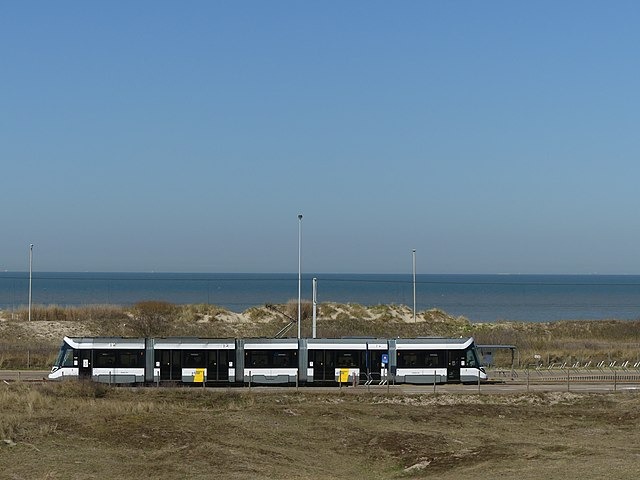
A travel specialist, who prefers slow-paced journeys, embarks on an exploration of the world’s longest tram route, which takes you on a cinematic ride through Belgium’s dunes and unique seaside towns.
I have a confession to make – I’m a travel writer who loves Belgium. The Belgian coast, with its charming dunescapes, art nouveau villas, gothic town halls, geometric art deco, and modern concrete, never ceases to surprise me. While high-rise apartment blocks threaten the dunes, the 65km Belgian coastline from the Dutch to the French border remains intriguing. In the late 19th century, Belgium was consumed by railway mania, resulting in the establishment of a well-connected mainline network and a maze of narrow-gauge railways. The first sections of an ambitious new route, which ran the length of the Belgian coast, opened in 1885, and it remains in service today as the world’s longest tram line, the sole survivor of a network that boasted over 2,800 miles of light railways and urban trams in 1945.
A duration of 153 minutes of film.
Taking a ride on the Kusttram, which operates as a tramway, from De Panne in the southwest to Knokke near the Dutch border, is a 153-minute visual delight that feels like watching a movie. In his book “The Kingdom by the Sea,” Paul Theroux explored Britain’s coastline to better understand the country. Similarly, an end-to-end journey on the Kusttram is an excellent way to come to terms with modern Belgium. My plan is to start my journey in the morning from the “French” end of the line and make several stops along the way. With a one-day pass priced at just €7.50, I board a modern, comfortable tram at De Panne, and the first station I visit is Plopsaland, named after the theme park where gnomes stand at the entrance to welcome visitors.
De Haan’s coastal fashion.
Our next destination is De Haan, which is arguably the most charming coastal community in the area. Before the arrival of the rail line, De Haan was a destitute seaside village inhabited by shrimp fishermen and their families, consisting of scattered huts that were viewed by neighboring villages as a den of scoundrels and thieves. However, within a few years of the tram’s introduction, De Haan transformed into an art colony and an elite resort, frequented by the likes of Albert Einstein.
In De Haan, a splendid art nouveau tram station serves as the centerpiece of the village, and it is encircled by exquisite cafes. I choose to visit the Beaufort tea room, located in a luxurious villa adjacent to the tram line. Although nobody in De Haan depends on fishing for a living anymore, reminders of the sea are still prevalent, as the Beaufort is named after the Irish sea captain who created the wind force scale that measures the power of the elements. Families spend hours sitting by the window, indulging in copious amounts of cake.
Factual information about travel.
De Lijn operates the Kusttram service departing every 15 minutes during the day and less frequently in the evenings, increasing to every 10 minutes during peak summer hours. Many journeys require a change of tram in Ostend. Purchase a one-day pass (€7.50 for over-12s/€4 for 6-11s) for unlimited travel and breaks in the journey, or a three-day pass for €15/€8. Passes can be obtained from ticket machines before boarding. De Panne and Knokke have good rail connections with other Belgian cities, with Ostend located midway along the Kusttram route and reachable in 90 minutes by fast train from Brussels.



